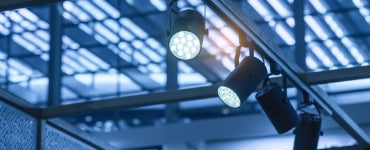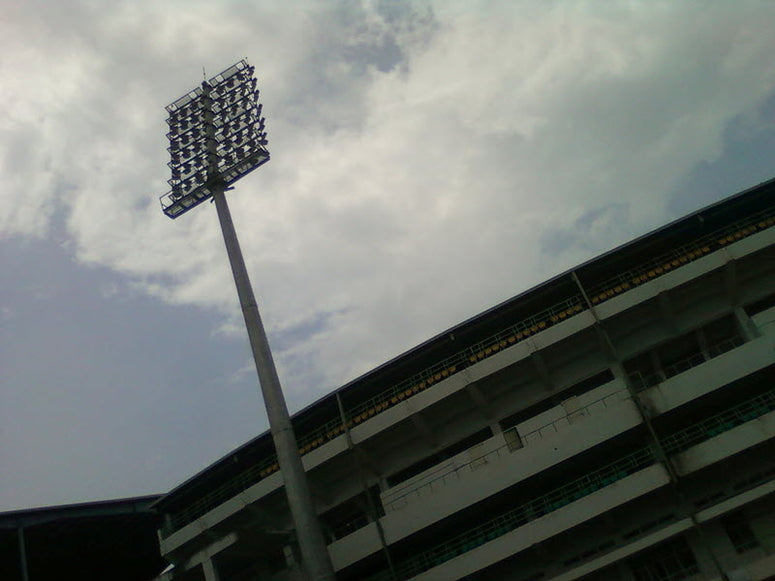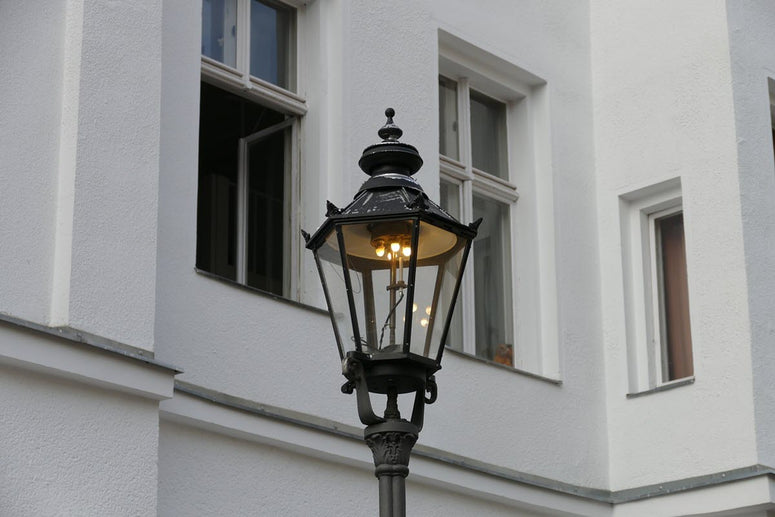
Historical Perspective: From Incandescence to New LED Technology
Our journey from the inefficient incandescent light bulb to today's new LED technology is a testament to our unwavering pursuit of brightness, efficiency and sustainability.
The Dawn of Electric Illumination
In the late 19th century, the invention of the incandescent light bulb by Sir Hiram Maxim, Sir H. Joseph Swan and most famously, Thomas Edison marked a pivotal moment in lighting history. These bulbs worked on a simple principle: an electric current passed through a filament, causing it to glow and produce light. While revolutionary, incandescents were energy-intensive, converting only about 5% of the energy they consumed into light, with the remainder lost as heat.
Enter Fluorescence
The mid-20th century saw the rise of fluorescent lamps, offering a more energy-efficient alternative to incandescent bulbs. These tubes, filled with a bit of mercury vapor, emitted ultraviolet light when electrified. This ultraviolet light then struck a phosphorescent coating inside the tube, producing visible light. Fluorescents were more energy-efficient than their incandescent predecessors but came with their own challenges, including the environmental concerns associated with mercury content.
LED Light Technology
The origins of light-emitting diode (LED) light technology can be traced back to the early 20th century. Still, it wasn't until the late 20th century that LEDs began to significantly influence commercial lighting. LEDs work on the principle of electroluminescence, where semiconductors provide light when an electric current passes through them. Their inherent advantages – energy efficiency, longer lifespan and reduced heat emission – quickly made them a favorite. By the turn of the 21st century, advancements in LED light technology made it possible to produce white light suitable for residential and commercial applications.
The Rise of LED Light Technology in Commercial Spaces
The ascent of LED light technology in commercial environments wasn't an overnight phenomenon. It was a carefully orchestrated confluence of technological innovations, market demands and environmental considerations that paved the way for LEDs to become the preferred choice.
Economic Viability and Energy Savings
At the heart of LED adoption in commercial spaces was its potential for substantial cost savings. While initial investment costs for new LED technology were higher than traditional lighting options, their longer lifespan and significantly lower energy consumption quickly translated into tangible savings on utility bills. Over time, as manufacturing processes improved and economies of scale came into play, the upfront costs of LEDs also saw a marked decline, further enhancing their economic appeal.
Durability and Reliability
Commercial spaces require lighting solutions that endure extended operational hours and demanding conditions. LEDs, with their robust build and lack of fragile components such as filaments or glass tubes, emerged as a reliable choice. Their resistance to vibrations, frequent switching and temperature variations further solidified their position in commercial settings like factories, warehouses and retail outlets.
Design Versatility
Another driving factor for adopting LED light technology in commercial spaces was their design flexibility. Due to their compact size and adaptability, LEDs could be seamlessly integrated into various architectural and interior designs. While tried-and-true tube lighting is available with LEDs, businesses have alternative options to illuminate spaces aesthetically as well as functionally, enhancing the ambiance and user experience.
Sustainability and Green Building Movements
The global push towards sustainable construction and green building practices played a significant role in LED light technology. As environmental regulations tightened and certifications like LEED (Leadership in Energy and Environmental Design) gained traction, LEDs' low carbon footprint and recyclability became valuable assets.
Improved Light Quality
The last piece of the puzzle was the unparalleled light quality LEDs brought to the table. New LED technology ensured commercial spaces could benefit from consistent, flicker-free illumination with excellent color rendering. This not only created pleasant environments but also improved visibility and safety, which is crucial for places like parking lots, hallways and workspaces.
LED Lighting Trends Shaping the Present
As technology continues to innovate, several LED lighting trends have emerged, reflecting the current demands and aspirations of the commercial lighting sector. Here's a look at some of the newest LED light technology that's shaping the present:
Adaptive Lighting Systems
Modern LED fixtures are increasingly being integrated with sensors to create adaptive lighting systems. These systems can detect occupancy, ambient light levels or even time of day, adjusting brightness and color temperature accordingly. The result is optimized energy usage and a dynamic environment that responds to the specific needs of its occupants.
Human-Centric Lighting
Beyond mere illumination, there's a growing recognition of the impact of light on human well-being. This has given rise to human-centric or circadian lighting, where LEDs are tuned to mimic the natural light cycle, supporting human circadian rhythms and potentially enhancing mood, productivity and sleep quality.
Integration with IoT
The Internet of Things (IoT) is no longer a futuristic concept but a present-day reality. LEDs are now often integrated with IoT platforms, enabling remote control, diagnostics and data-driven insights. This connectivity offers building managers and owners unprecedented control over their lighting systems, paving the way for smart buildings and cities.
LiFi Technology
Light Fidelity (LiFi) is an exciting development where LEDs are used to transmit data by modulating light at speeds imperceptible to the human eye. While still in its nascent stages, the potential for LED light technology to serve dual functions – illumination and data transmission – is a trend worth watching.
Sustainable and Eco-friendly Materials
The LED industry is continually seeking to reduce its environmental footprint. Recent trends see a shift towards using more sustainable materials in LED production, minimizing waste and ensuring that LED products are more recyclable at the end of their life.
Enhanced Optics for Precision Lighting
Advanced optics incorporated into LED fixtures allow for more precise light distribution. This is particularly valuable in commercial settings like retail displays, art galleries or any environment where pinpointed or accent lighting can make a significant difference.
The Future of Lighting: What's Next for LEDs?
New lighting technology is always evolving. Let's explore what the future of lighting holds for LEDs and how they might further transform the way we illuminate our world.
- Organic LEDs (OLEDs): While LEDs use inorganic materials, there's growing interest in Organic LEDs or OLEDs. They're made from carbon-based organic materials that emit light when electricity is applied, which could lead to even thinner, more flexible lighting solutions. Think of bendable screens, transparent light panels and designs that were previously unimaginable.
- Quantum Dots: This nanotechnology promises to revolutionize color quality in LEDs. Quantum dots are defined as semiconductor particles only a few nanometers in size that can be fine-tuned to emit specific colors. Integrating them with LEDs allows us to achieve unparalleled color accuracy and vibrancy, which is crucial for tasks like medical lighting or film production.
- Beyond Visible Light: As we expand our understanding of light and its applications, LEDs might be increasingly used for more than just visible illumination. From UV LEDs that can sterilize surfaces to infrared LEDs for improved remote sensing, the spectrum of possibilities is vast.
- Self-Powered LEDs: Imagine new lighting technology with LEDs requiring minimal external power because they harness energy from their surroundings, be it solar energy or ambient vibrations. Research into piezoelectric materials and photovoltaic integration could make self-powered LEDs a reality.
- Dynamic Response to Environment: Envision lighting systems that adjust in real-time to weather conditions, ambient noise levels or even the emotional mood of room occupants, thanks to integrated AI systems.
- Seamless Integration into Architecture: As LEDs become more versatile and compact, we might see a future where they're integral parts of architectural elements, redefining the aesthetics of built environments, with walls, ceilings or floors serving as light sources.
- Enhanced Lifespan With Minimal Degradation: While LEDs already boast impressive lifespans, research is ongoing to push these boundaries further. The future of lighting might see LEDs that last decades with minimal luminosity degradation or color shift.
Frequently Asked Questions About LED Light Technology
As LED lighting continues to evolve and redefine the way we illuminate our spaces, questions inevitably arise. Whether you're a seasoned professional in the industry or simply curious about the newest LED light technology, we've compiled a list of frequently asked questions to shed light on the most pressing topics and queries.
What Is the Future of LED Lighting?
The future of lighting is set to be dynamic and multifaceted. As technology advances, we can expect LEDs to become even more energy-efficient, adaptable and integrated into our environments. From flexible designs and enhanced color quality to intelligent responses to environmental factors and seamless architectural integration, the newest LED technology will continue to evolve, offering innovative solutions that cater to a broad range of human needs.
How Have LED Lights Improved?
Over the years, LED lights have undergone significant advancements, making them more efficient, durable and versatile than ever before. Their energy consumption has decreased, leading to greater cost savings for users. Additionally, they now offer better light quality, longer lifespans and a wider range of design options, like decorative LED bulbs. Innovations have also enabled them to be integrated with smart technologies, allowing for greater control and adaptability to users' needs. In essence, LEDs have transformed from basic light sources to sophisticated, eco-friendly lighting solutions that cater to modern demands.
Can LED Lights Be Used in Any Fixture?
While many LED lights are designed to fit standard fixtures, it's essential to check compatibility. Some traditional fixtures may not be suited for LED lamps due to heat dissipation needs or electrical requirements. However, with the growing popularity of LEDs, many manufacturers now produce LED-compatible fixtures and retrofit kits to ensure a smooth transition.
How Has New Light Bulb Technology Using LEDs Affected Residential Applications?
The advent of new light bulb technology using LEDs has significantly transformed residential applications. Homes now benefit from longer-lasting bulbs, resulting in fewer replacements and reduced maintenance costs. Enhanced energy efficiency of these new bulbs leads to notable savings on electricity bills. Additionally, the diversity in design, color temperatures and smart integration allows homeowners to tailor their lighting to specific moods, tasks or aesthetic preferences. In essence, new lighting technology with LEDs has made home lighting more economical, customizable and environmentally friendly.
Warehouse-Lighting.com Is at the Forefront of LED Light Technology
Discover the future of lighting at Warehouse-Lighting.com. As leaders in LED light technology, we're dedicated to bringing you the most advanced and efficient commercial lighting solutions available. Embrace the brilliance, sustainability and innovation of the newest LED light technology. Upgrade today and experience the transformative power of cutting-edge LED technology.
LSR 4 FOOT LED LINEAR STRIP RETROFIT KIT, 26W, 120-277V
WareLight's LSR Reto strip kit 26-watt, 4-foot LED linear provides industry-leading performance that ensures energy savings and continuous dimming. Watch this clip to see how quick and easy it is to install – no need to replace existing luminaire housings.
Related Articles: LED Light Technology
Check out five new LED lighting developments that opened up new possibilities for this dependable lighting solution.
Take a closer look at some of the historical turning points in high-intensity discharge (HID) lighting.
Take a step further back in time and explore the history of this early lighting source.
 High Bay LED Lighting
High Bay LED Lighting
 Industrial Low Bay Lighting
Industrial Low Bay Lighting
 Industrial Strip Lights
Industrial Strip Lights
 Vapor Tight Lighting
Vapor Tight Lighting
 LED Shop Lights
LED Shop Lights
 Hazardous Area / Explosion Proof Lighting
Hazardous Area / Explosion Proof Lighting
 Loading Dock Lights
Loading Dock Lights
 Construction / Portable Lighting
Construction / Portable Lighting
 High Temperature LED Lights
High Temperature LED Lights
 Industrial Ceiling Fans
Industrial Ceiling Fans
 LED Work Lights
LED Work Lights
 Networked Controlled Lighting
Networked Controlled Lighting
 NEW Warehouse Lighting Fixtures
NEW Warehouse Lighting Fixtures
 American Made Industrial Lighting
American Made Industrial Lighting
 Clearance
Clearance
 Troffer Lights
Troffer Lights
 LED Flat Panel Lights
LED Flat Panel Lights
 Drop Ceiling Lights
Drop Ceiling Lights
 Suspended LED Lights
Suspended LED Lights
 LED Cylinder Lights
LED Cylinder Lights
 Exit / Emergency
Exit / Emergency
 Wrap Lighting Fixtures
Wrap Lighting Fixtures
 Gooseneck and Barn Lights
Gooseneck and Barn Lights
 Stairway & Corridor Lighting
Stairway & Corridor Lighting
 Hospital Bed Lights
Hospital Bed Lights
 Recessed Lighting
Recessed Lighting
 Wafer Lighting
Wafer Lighting
 RGB LED Lights
RGB LED Lights
 Grow Lights
Grow Lights
 Refrigeration Lighting
Refrigeration Lighting
 Commercial Sign Lights
Commercial Sign Lights
 LED Track Lighting Fixtures & Systems
LED Track Lighting Fixtures & Systems
 UV Disinfecting Lights & Air Purifier Fixtures
UV Disinfecting Lights & Air Purifier Fixtures
 American Made Commercial Lighting
American Made Commercial Lighting
 LED Flood Lights
LED Flood Lights
 Outdoor Wall Lights
Outdoor Wall Lights
 LED Area Lights
LED Area Lights
 Parking Lot Lights & Poles
Parking Lot Lights & Poles
 Outdoor Post Top Lights
Outdoor Post Top Lights
 LED Stadium Lighting
LED Stadium Lighting
 Canopy Lights
Canopy Lights
 Security & Motion Sensor Lights
Security & Motion Sensor Lights
 LED Bollard Lights
LED Bollard Lights
 Outdoor LED Linear Light Fixtures
Outdoor LED Linear Light Fixtures
 Solar Powered LED Lighting
Solar Powered LED Lighting
 Dusk to Dawn Lights
Dusk to Dawn Lights
 Landscape Lighting
Landscape Lighting
 Outdoor String Lights
Outdoor String Lights
 Coastal Wildlife Lighting
Coastal Wildlife Lighting
 Outdoor House Lights
Outdoor House Lights
 American Made Outdoor Lighting
American Made Outdoor Lighting
 Architectural Linear Lights
Architectural Linear Lights
 Architectural Grid Mount Lights
Architectural Grid Mount Lights
 Architectural Round Pendant Lights
Architectural Round Pendant Lights
 Architectural Square Linear Lights
Architectural Square Linear Lights
 Architectural X-Shaped Linear Lights
Architectural X-Shaped Linear Lights
 Architectural LED Wall Packs
Architectural LED Wall Packs
 Ceiling Fans
Ceiling Fans
 Ceiling Lights
Ceiling Lights
 Chandelier Lights
Chandelier Lights
 Pendant Lighting
Pendant Lighting
 Island Lights
Island Lights
 Under Cabinet Lighting
Under Cabinet Lighting
 Vanity Lights
Vanity Lights
 Wall Sconces
Wall Sconces
 LED Tape Lights
LED Tape Lights
 LED Mirrors
LED Mirrors
 LED Light Bulbs
LED Light Bulbs
 LED Tube Lights
LED Tube Lights
 LED Corn Lights
LED Corn Lights
 Vintage LED Bulbs
Vintage LED Bulbs
 Decorative LED Bulbs
Decorative LED Bulbs
 Fluorescent Light Bulbs
Fluorescent Light Bulbs
 Metal Halide Lamps
Metal Halide Lamps
 LED Magnetic Strip Retrofit Kits
LED Magnetic Strip Retrofit Kits
 LED Strip Light Retrofit Kits
LED Strip Light Retrofit Kits
 High Bay LED Retrofit Kits
High Bay LED Retrofit Kits
 LED Troffer Retrofit Kits
LED Troffer Retrofit Kits
 LED Wall Pack Retrofit
LED Wall Pack Retrofit
 LED Street Light Retrofit Kits
LED Street Light Retrofit Kits
 Recessed Lighting LED Retrofit Kits
Recessed Lighting LED Retrofit Kits
 Ballasts & Drivers
Ballasts & Drivers
 Emergency Ballast For LED & Fluorescent Lights
Emergency Ballast For LED & Fluorescent Lights
 Electrical Supplies & Mounting Kits
Electrical Supplies & Mounting Kits
 Electrical Tools
Electrical Tools
 Switches & Receptacles
Switches & Receptacles
 Electrical Power Cords
Electrical Power Cords
 Sensors and Timers
Sensors and Timers
 Smart Home Automation
Smart Home Automation
 High Bay Occupancy Sensors
High Bay Occupancy Sensors
 Electric Vehicle Chargers
Electric Vehicle Chargers
 Hand Dryers
Hand Dryers
 LED Shop Lights
LED Shop Lights
 Garage LED Light Fixtures
Garage LED Light Fixtures
 Office Lights
Office Lights
 Classroom Lights
Classroom Lights
 Church Lights
Church Lights
 Gym Lighting
Gym Lighting
 Factory Lights
Factory Lights
 Hospital Lights
Hospital Lights
 Walkway Lights
Walkway Lights
 Parking Lot Lights
Parking Lot Lights
 Exterior Building Lights
Exterior Building Lights
 Sports Lighting
Sports Lighting
 Airport Lights
Airport Lights
 NSF Rated Lights
NSF Rated Lights
 Restaurant Lights
Restaurant Lights
 Corridor Lights
Corridor Lights
 Barn Lighting
Barn Lighting










